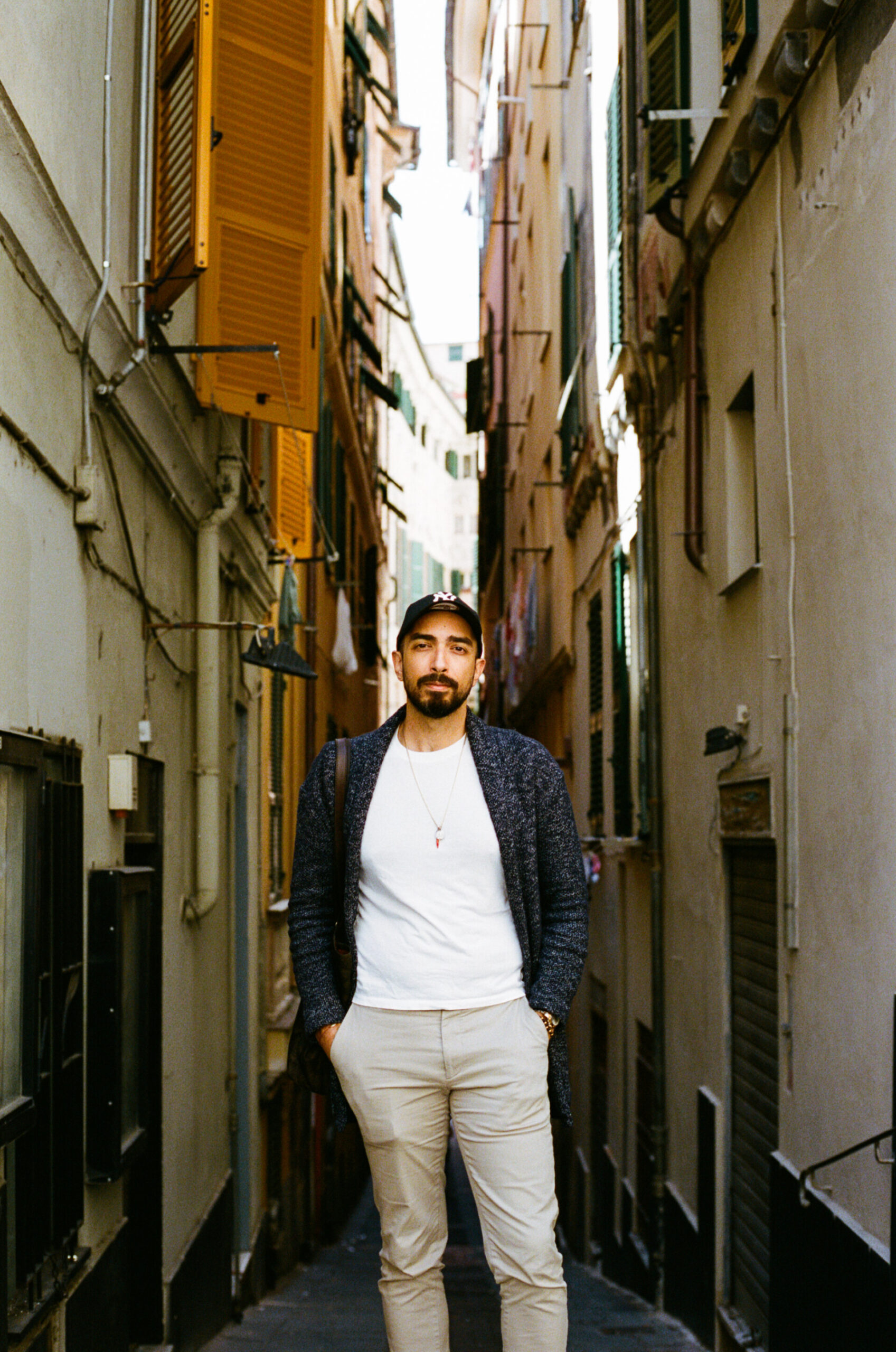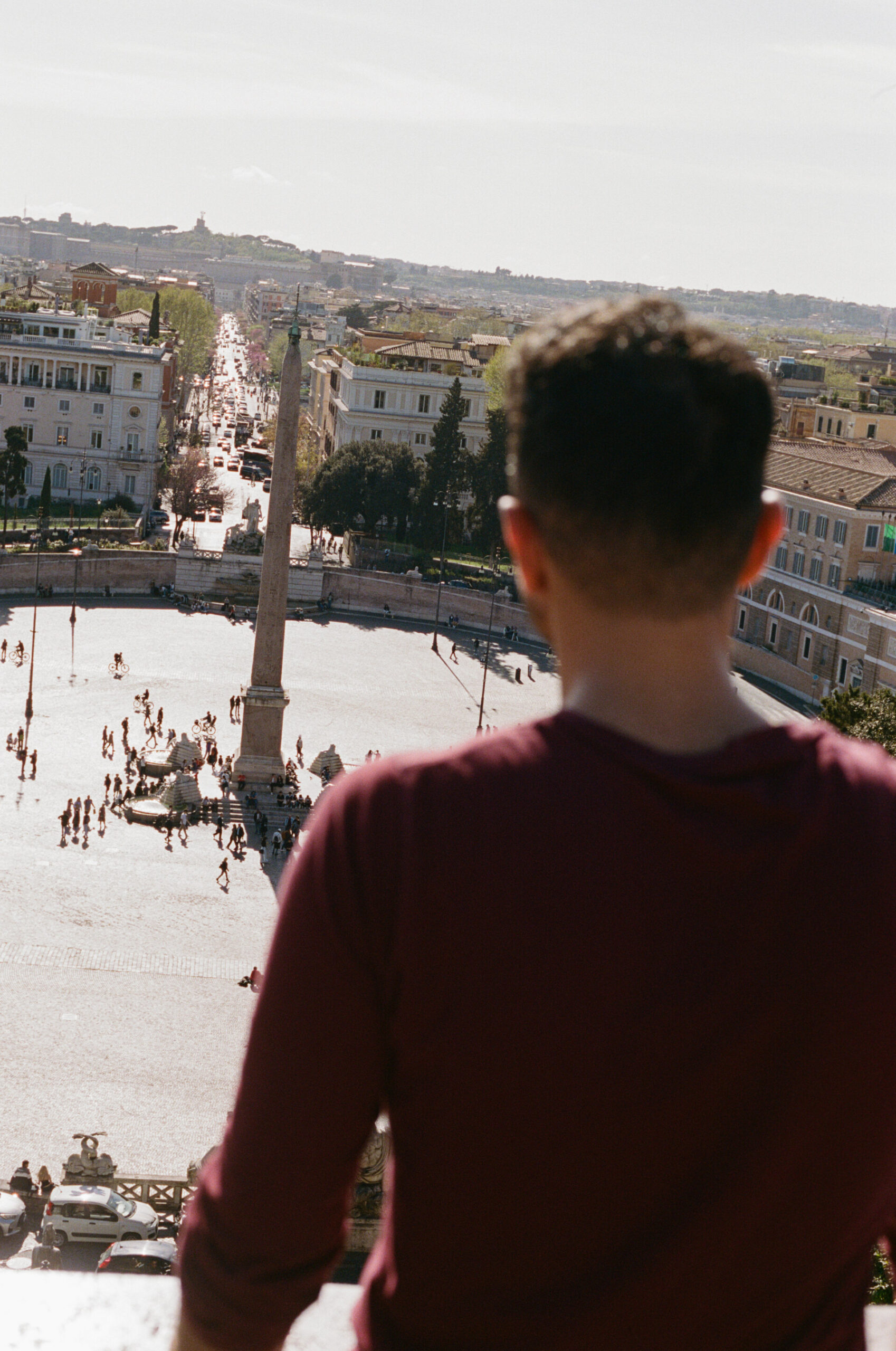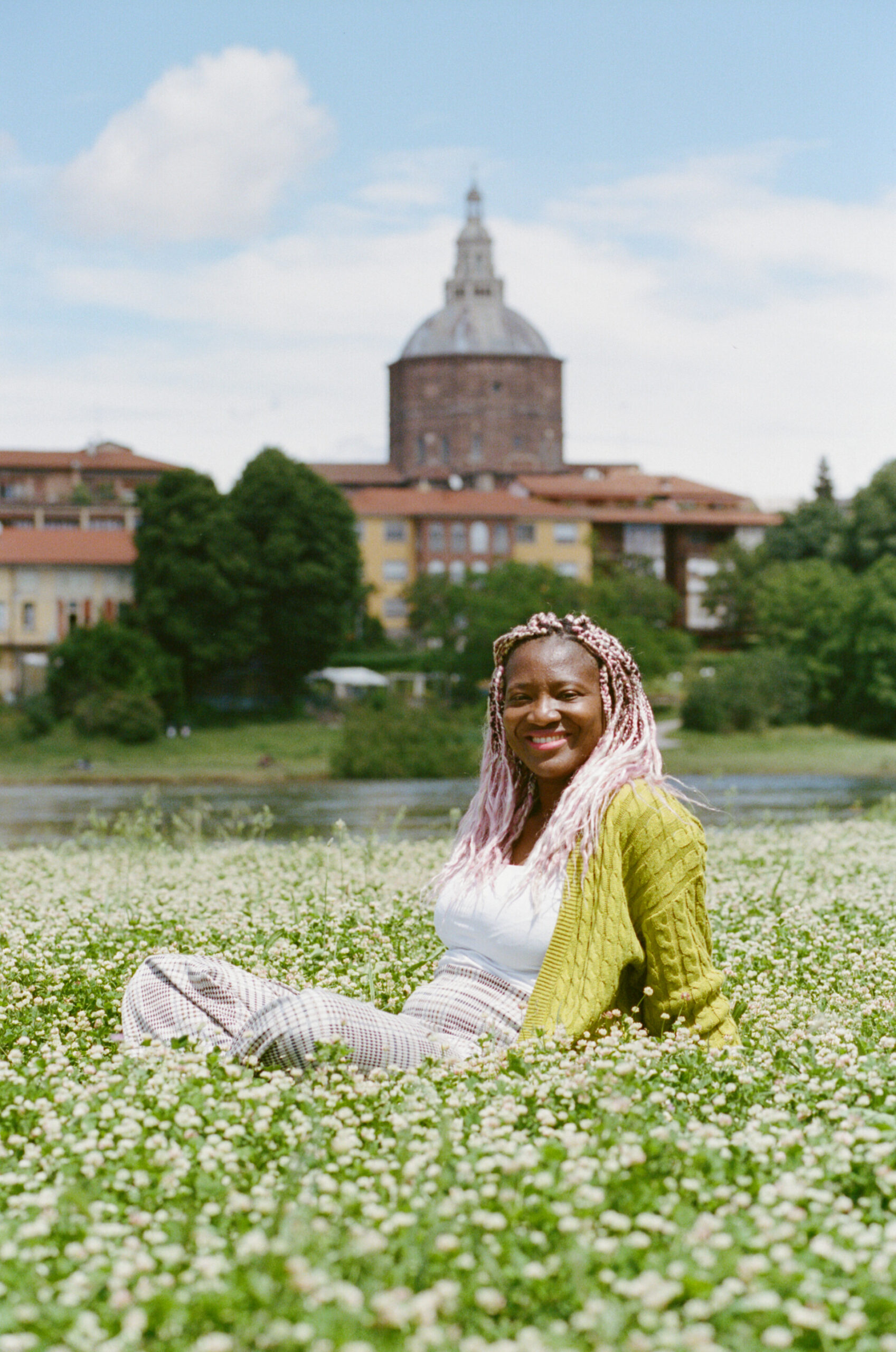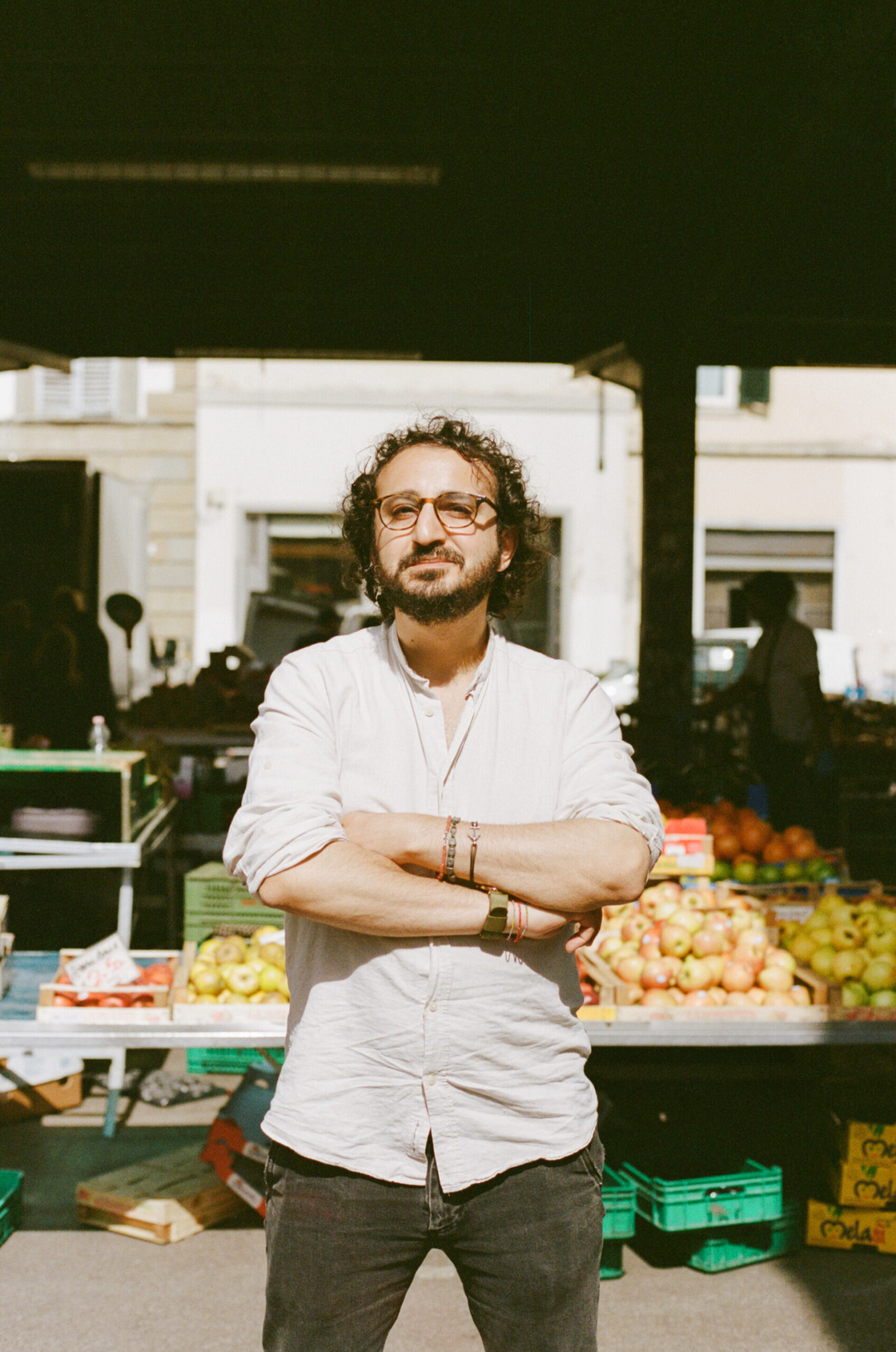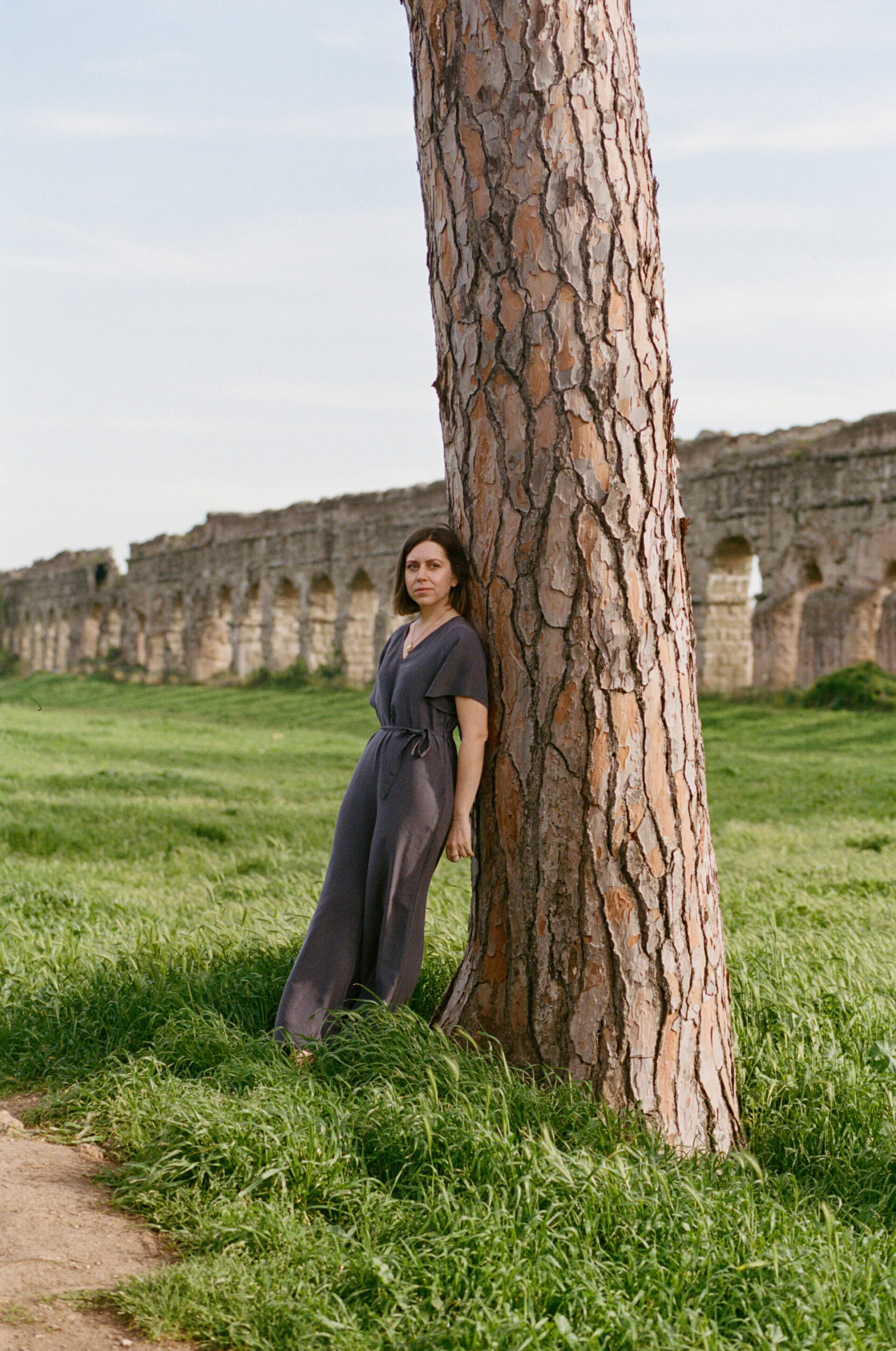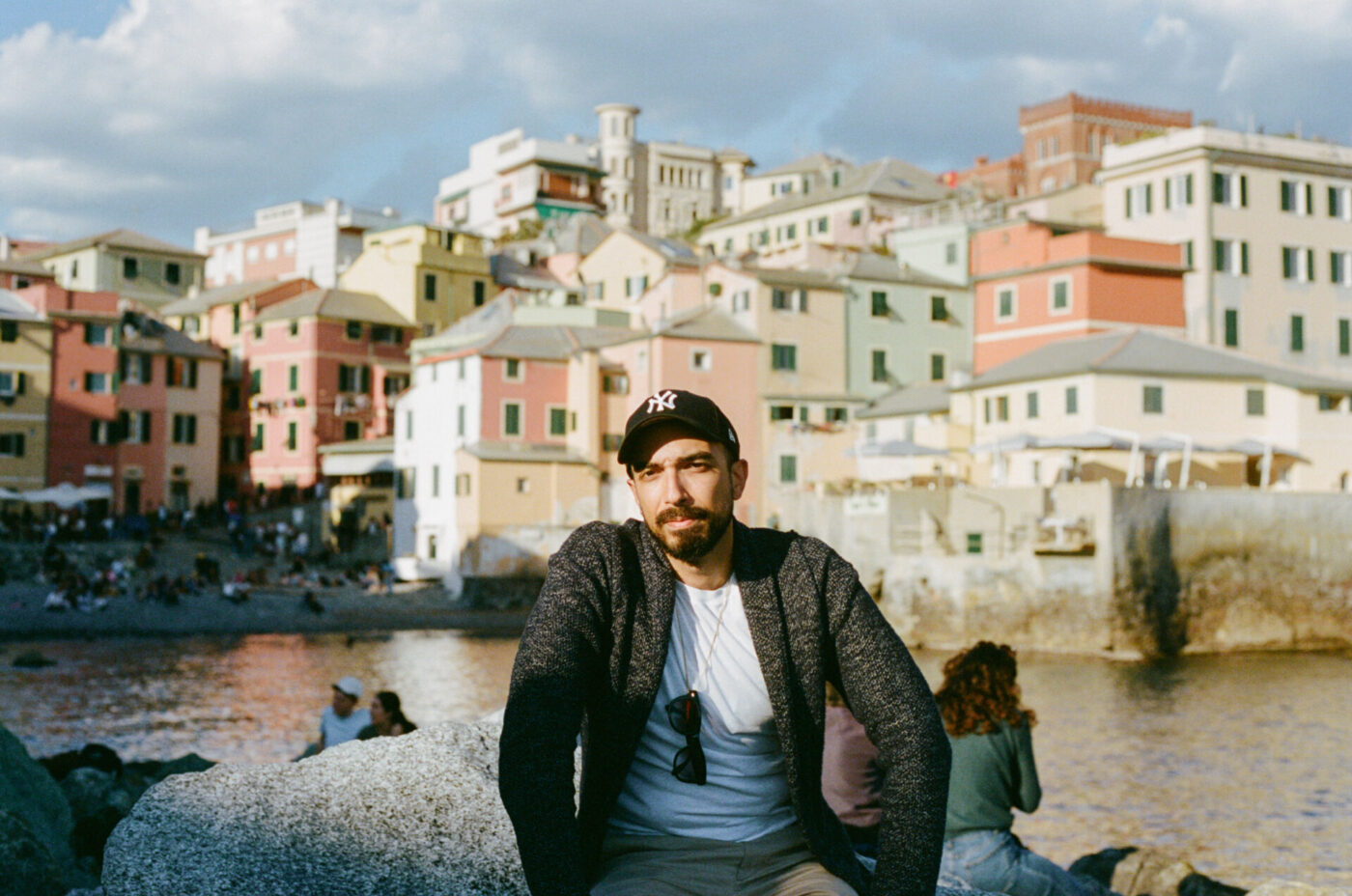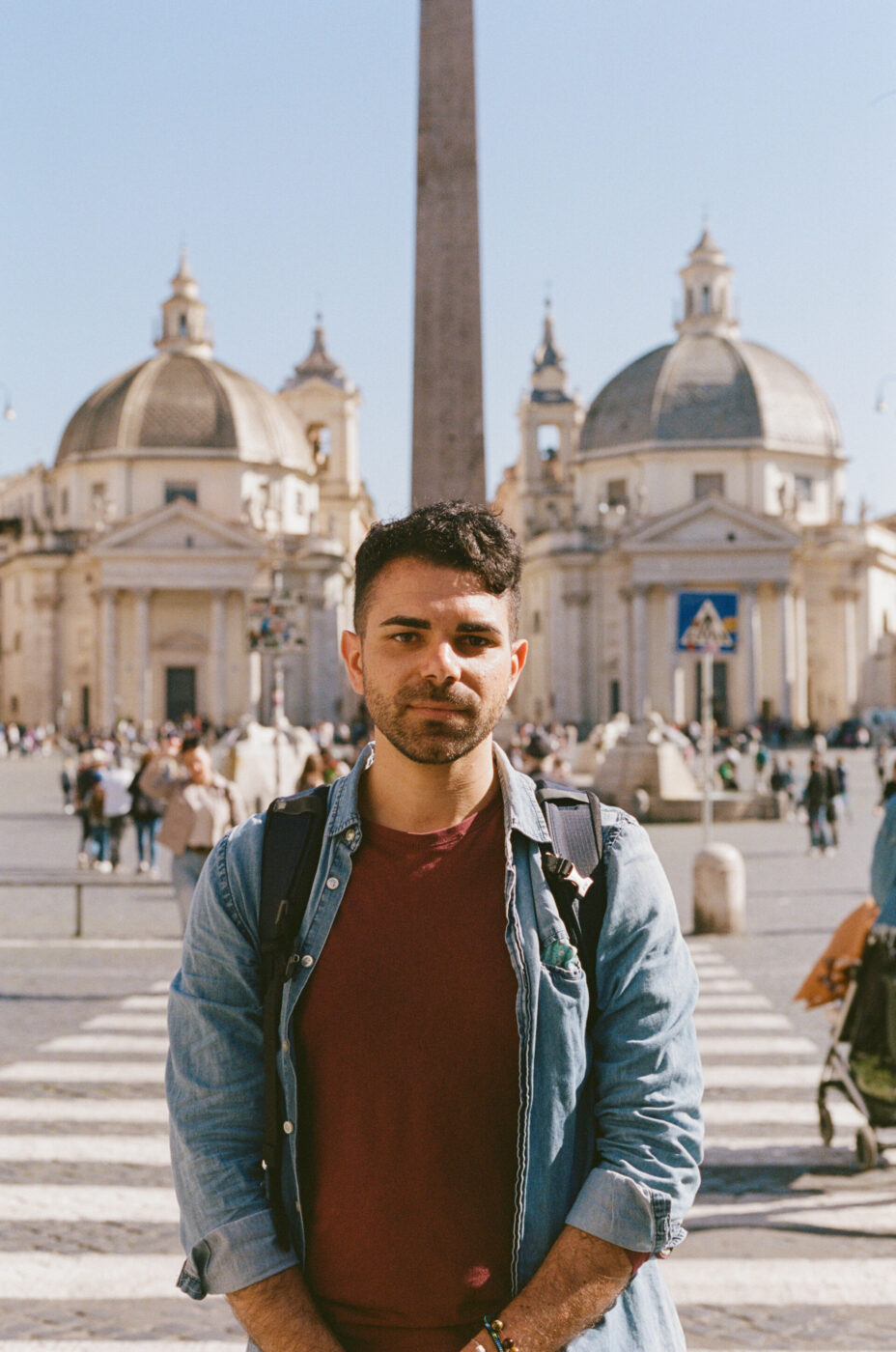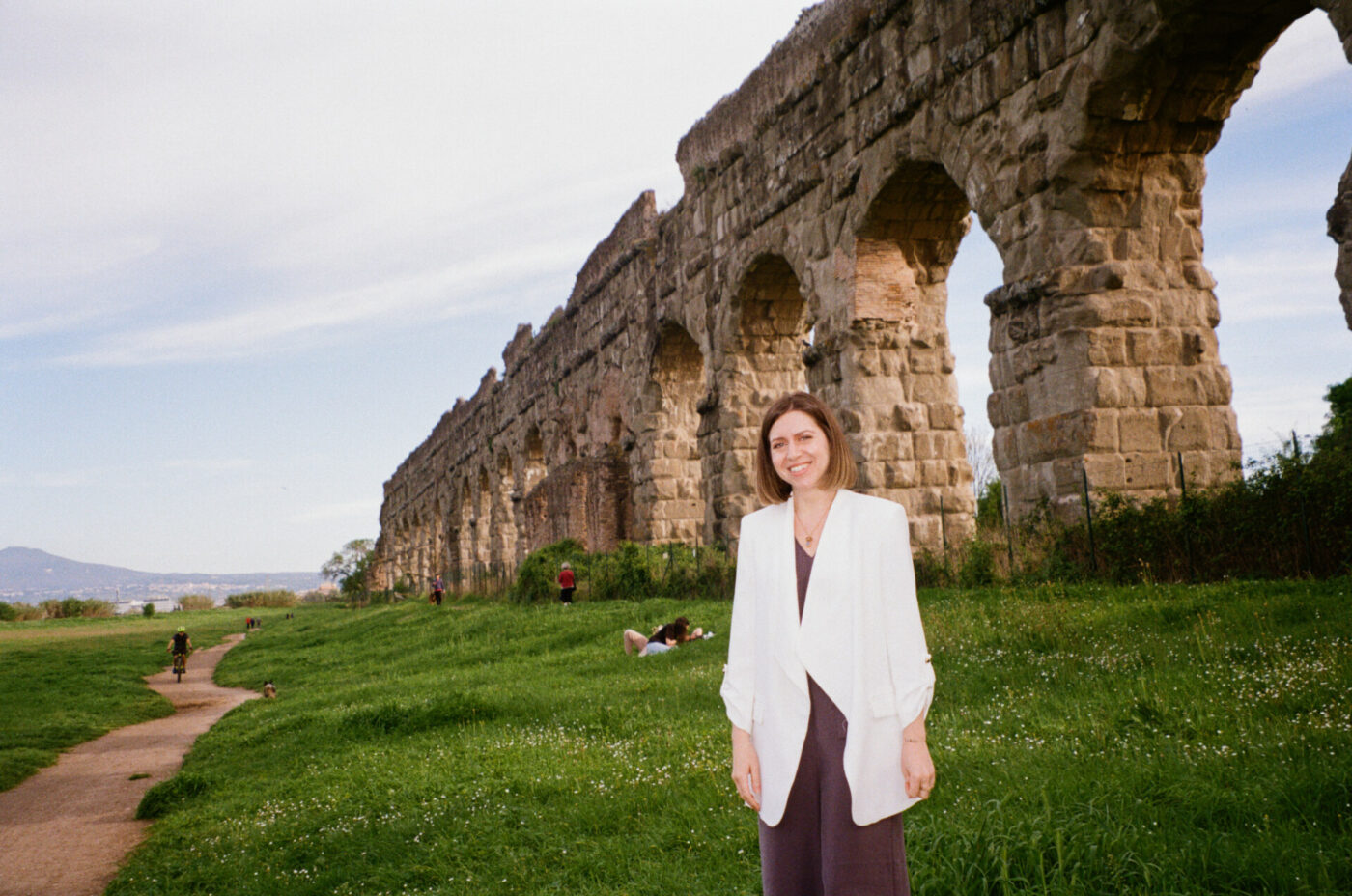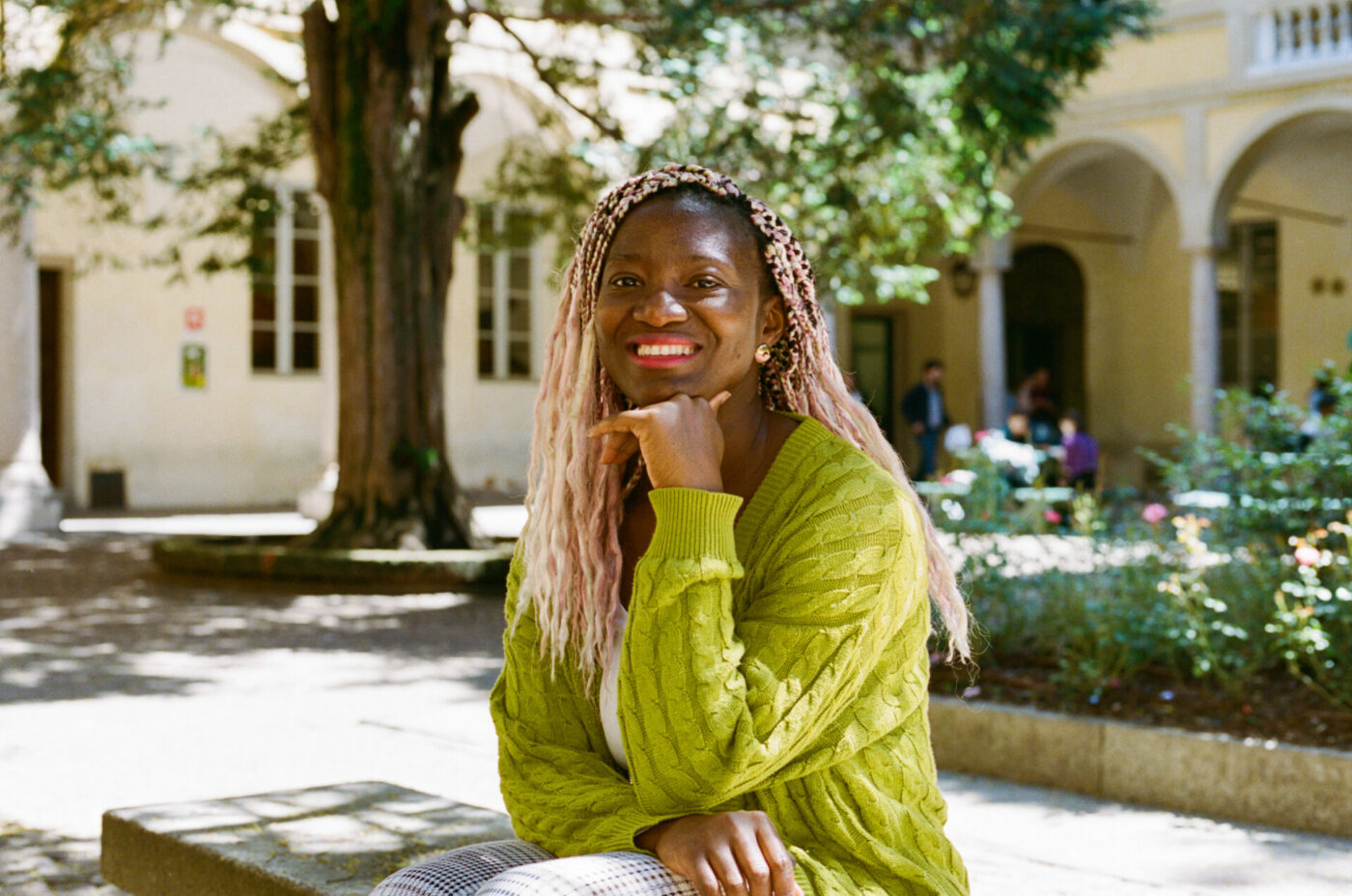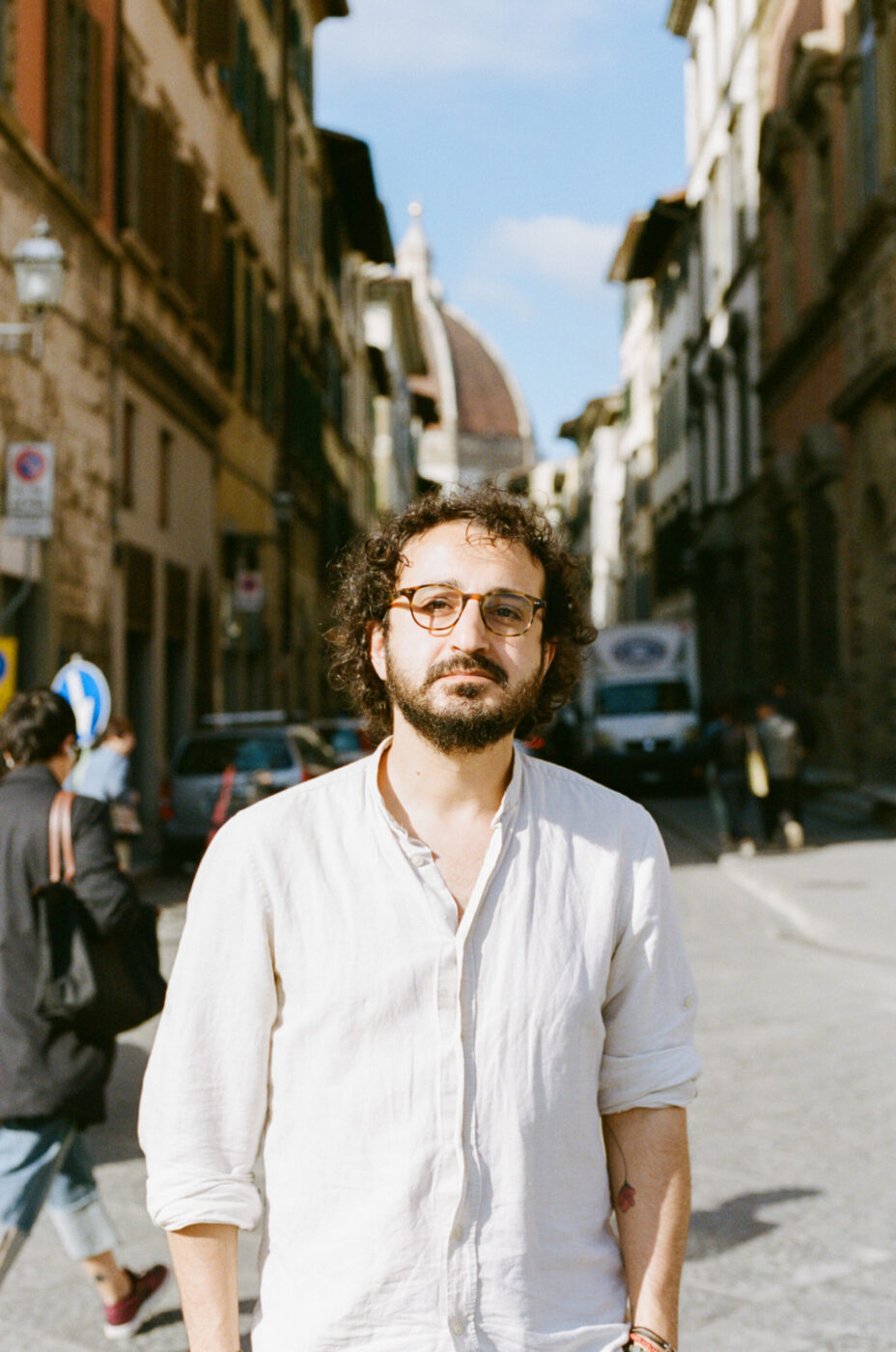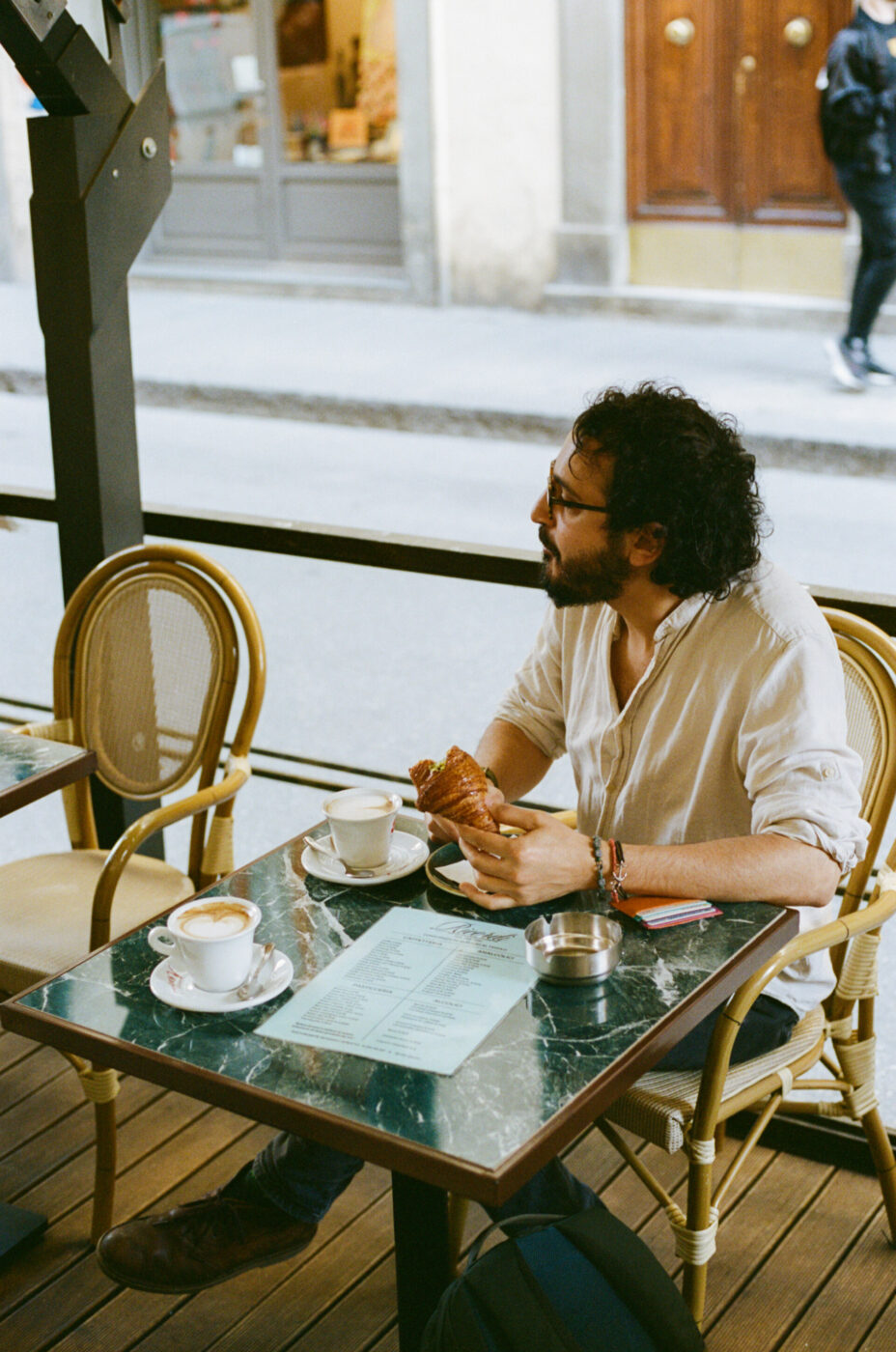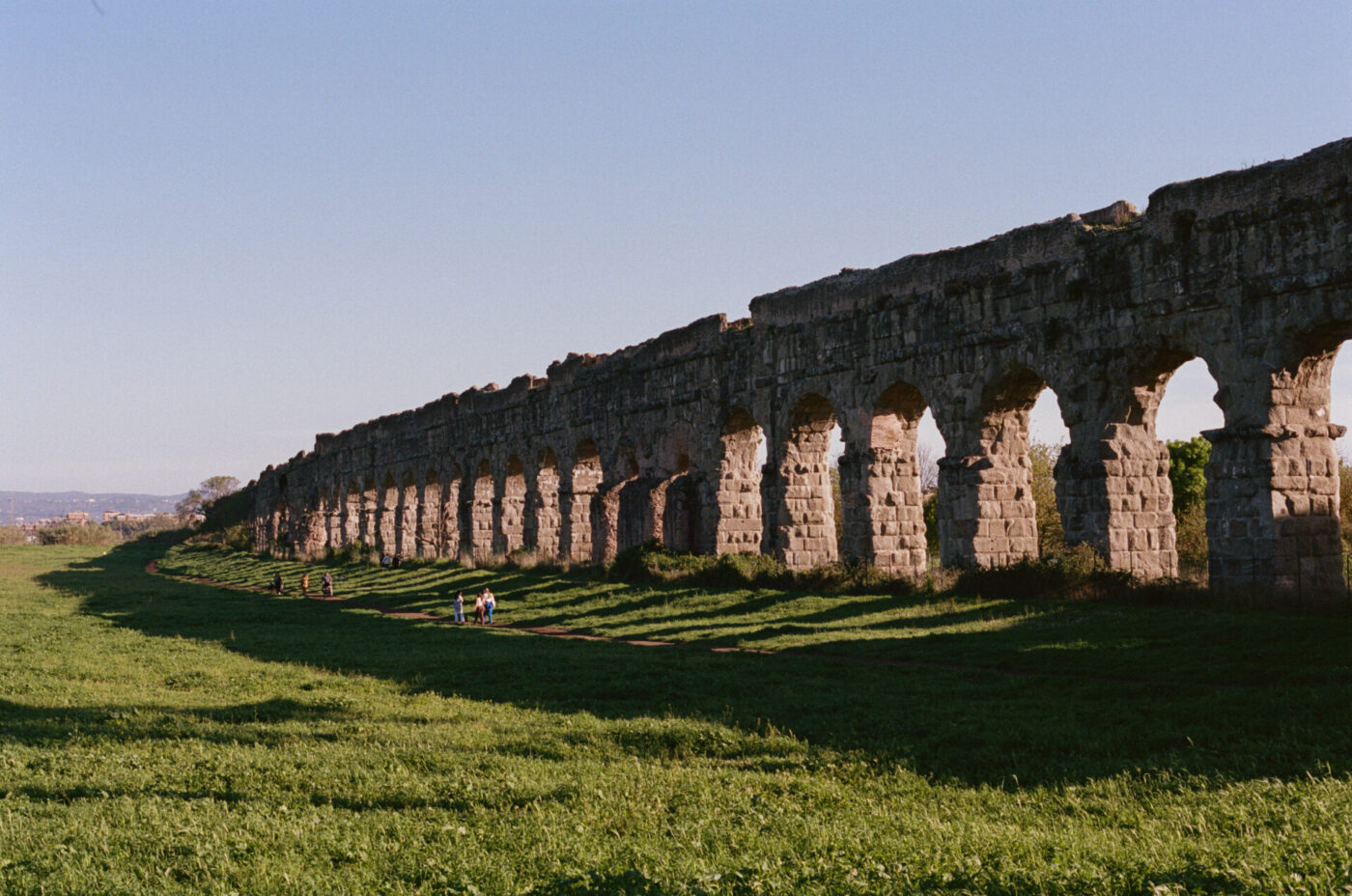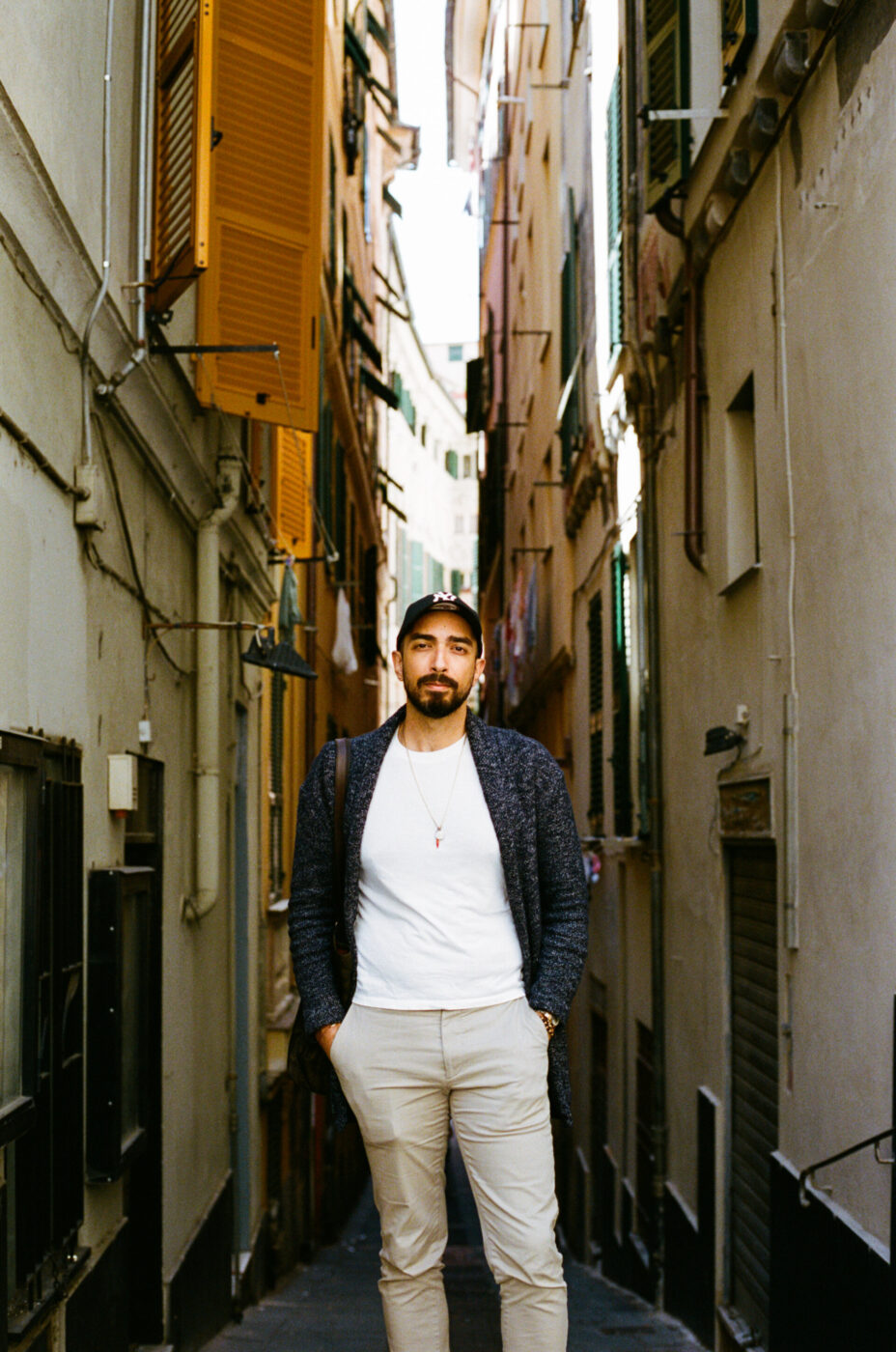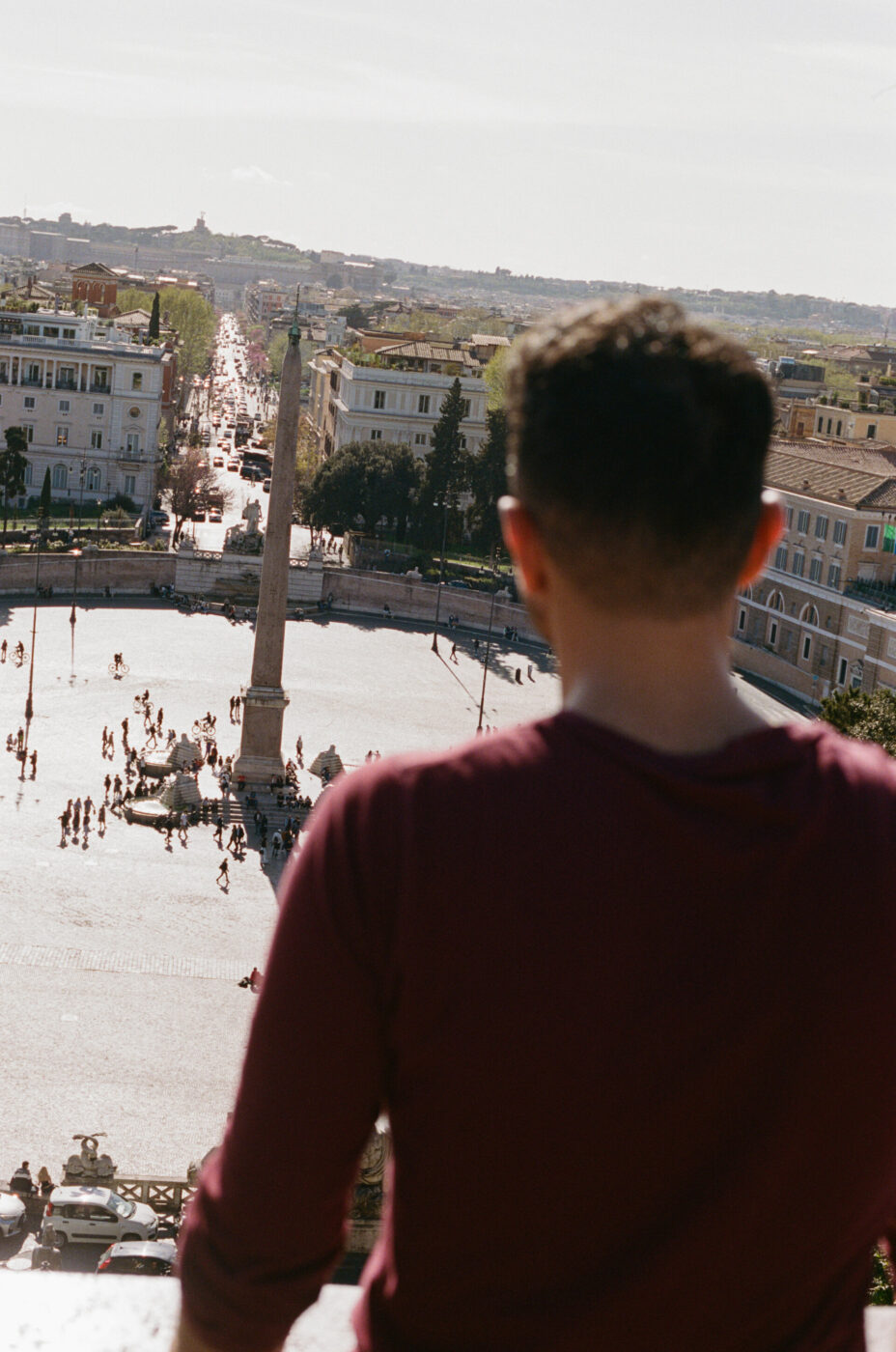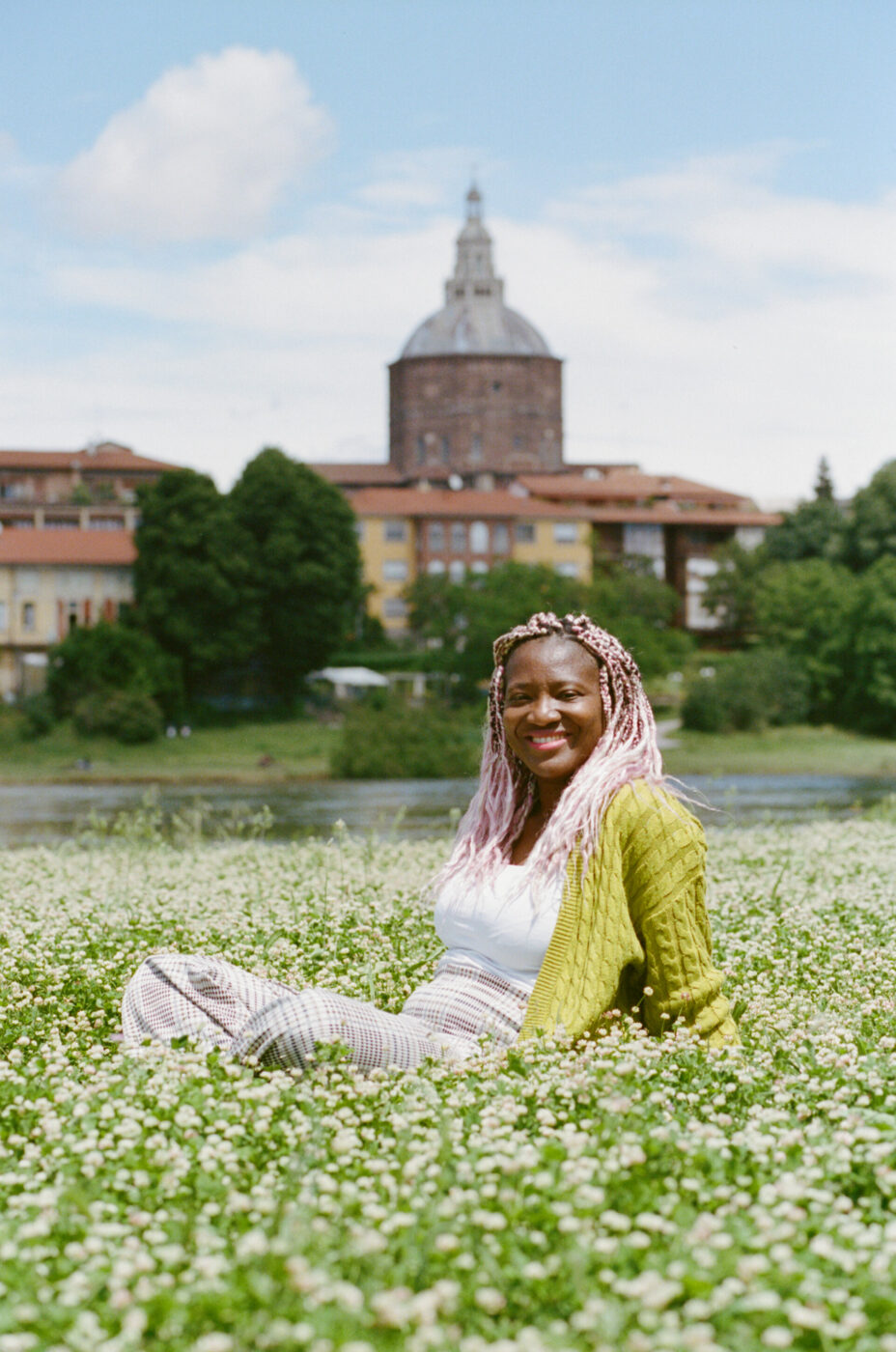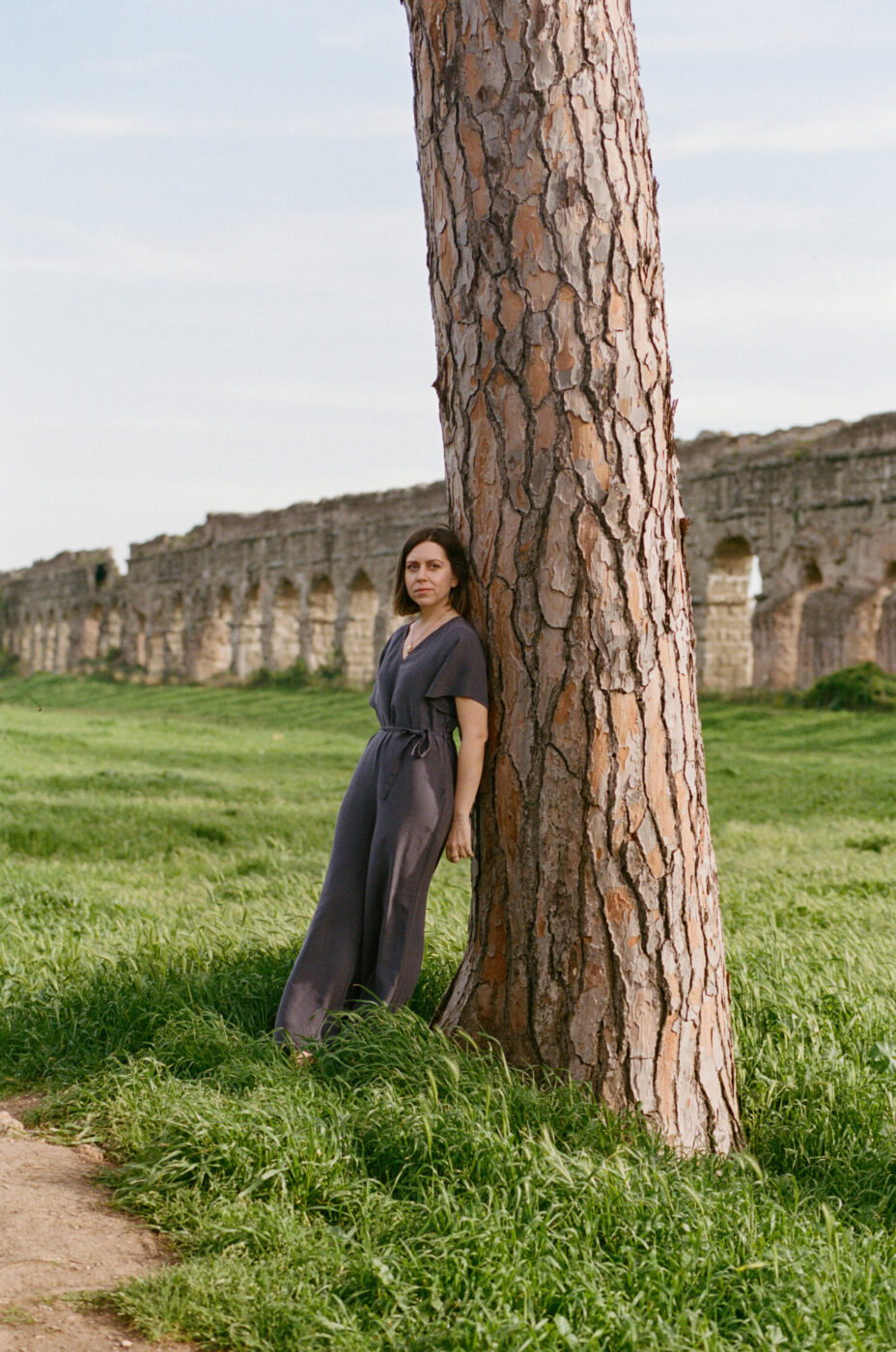Can one ever really understand what it’s like to grow up with a heart split in two?
Not a broken heart, but a heart that belongs to two worlds, two identities.
I’ve often wondered how one would best describe the strange existence of mixed-ethnicity Italians as myself, never really belonging to one place or another but perpetually split in half; our spirits torn in two, an even distribution the way Spaccanapoli divides the old city of Naples. I’ve often wondered what it could be like for Italians of foreign origin.
The Afro-Italians. The Asian Italians. The Indian Italians. Those who are as Italian as an Aperol spritz yet are rarely instantly perceived as such.
I’ve always felt as if I have two worlds inside my one person. My mother is Italian, born and raised in the port city of Genova, but her family is of Neapolitan origin–evident by the dialect still spoken at home. My father is from the Dominican Republic.
My mother raised me (along with my brothers) to understand that I was just as Italian as her. And I never felt that different from my mother as a child. But, as I grew older, I was made to realize the opposite.
I remember the first time I was told that I didn’t look Italian. I found it ever so strange. “How should I look?” I once asked.
“Not dark,” said my elementary school classmate. I remember it like it was yesterday.
“But I’m Italian!” I would say.
There were the times I would visit the home of certain relatives (who I wasn’t that close to for soon-to-be-apparent reasons) and would be asked at the dining room table before lunch, in a very slow manner as though I were deaf, “ma conosci la pasta?” (“are you familiar with pasta?”).
I found it ever so strange.
“But I’m Italian!” I would say.
There were many times I was questioned about my name. “Your father is from South America?” they would ask. Many thought everyone from Latin America was from South America.
“The Caribbean,” I would correct. “My mother is Italian but my father is Dominican.”
“Ah, allora sei straniero,” would be the next response. “Ah, so you’re foreign.”
I found it ever so strange. “But I’m Italian!” I would say once more.
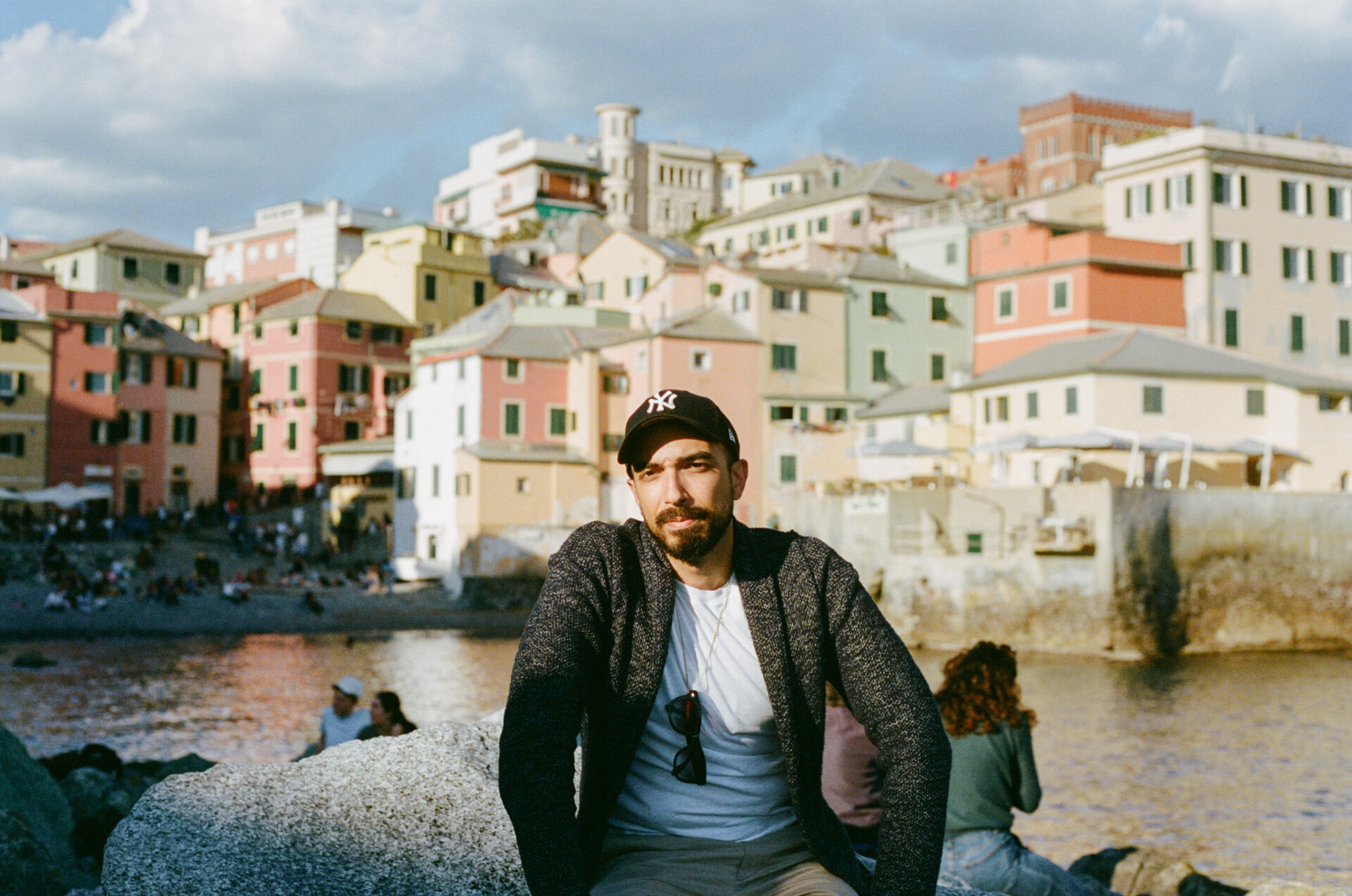
Gesù Antonio Baez in Genova, Photo by Gareth Paget
This was probably the most difficult thing for Italians to understand–that I was Italian. That despite my dark complexion, despite my foreign name, and despite my mixed heritage and birthplace, I was still Italian. That I was Italian AND something else. That this didn’t negate my italianità at all.
So easy to explain, but too difficult to grasp.
Perhaps it’s because we, as the “other Italians”, have rarely been given the spotlight. Sometimes we have–for a moment. There have been rising stars like Olympic champion Marcell Jacobs (half Italian, half African American) and volleyball star Paola Egonu (Italian from near Padova, born to Nigerian parents), but this light seems to be as fleeting as their victories.
They are sources of pride that are swiftly forgotten; afraid perhaps that their foreign names and unItalic appearances may not be compatible with the popular global imagery of the Italian. Think Sophia Loren. Monica Bellucci. Raoul Bova or Pavarotti.
Like the cut of an Italian suit or the form of a Ferragamo shoe, there is an image of the Italian that is upheld. But this fixed image of Italy denies the truest understanding of the art form of what it means to be Italian. For mixed Italians, coming from a multi-faceted and multi-layered country where dialects and food change from north to south, is only part of the complex tapestry that renders Italy her beauty.
A Question of Identity
A simple question like “where are you from?” can allow for the most elaborate of responses–and trigger the most complex emotions, at least for those of mixed origin or those born in a country their parents are not from.
Whenever someone asks “di dove sei?” I almost have to take a deep breath and, in the pause between the question and the response, I scan the one posing the question with utmost scrutiny. My thoughts run like the Giro d’Italia, whirling through questions the way those who cycle race past the Umbrian countryside. Where are you going with this? Why are you asking? And even if I respond, will you accept my answer?
“Growing up, being half Egyptian felt like a defect,” Amir Mohammed tells me. Amir’s father is Egyptian, and his mother is Italian. Amir was born and raised in Rome and works as Programme Manager of Teach for Italy, which focuses on reinvigorating the Italian education system by working with teachers and the Ministry of Education to bring quality education to Italy’s most disenfranchised areas and student groups. Despite his name and the hints of Egypt in his features, he’s a Roman through and through. You hear it in his accent and see it in the way he lights up when he talks of Rome. “I feel Roman before Italian,” he says jovially during our conversation. But, despite this love for the Eternal City, acceptance hasn’t been easy.
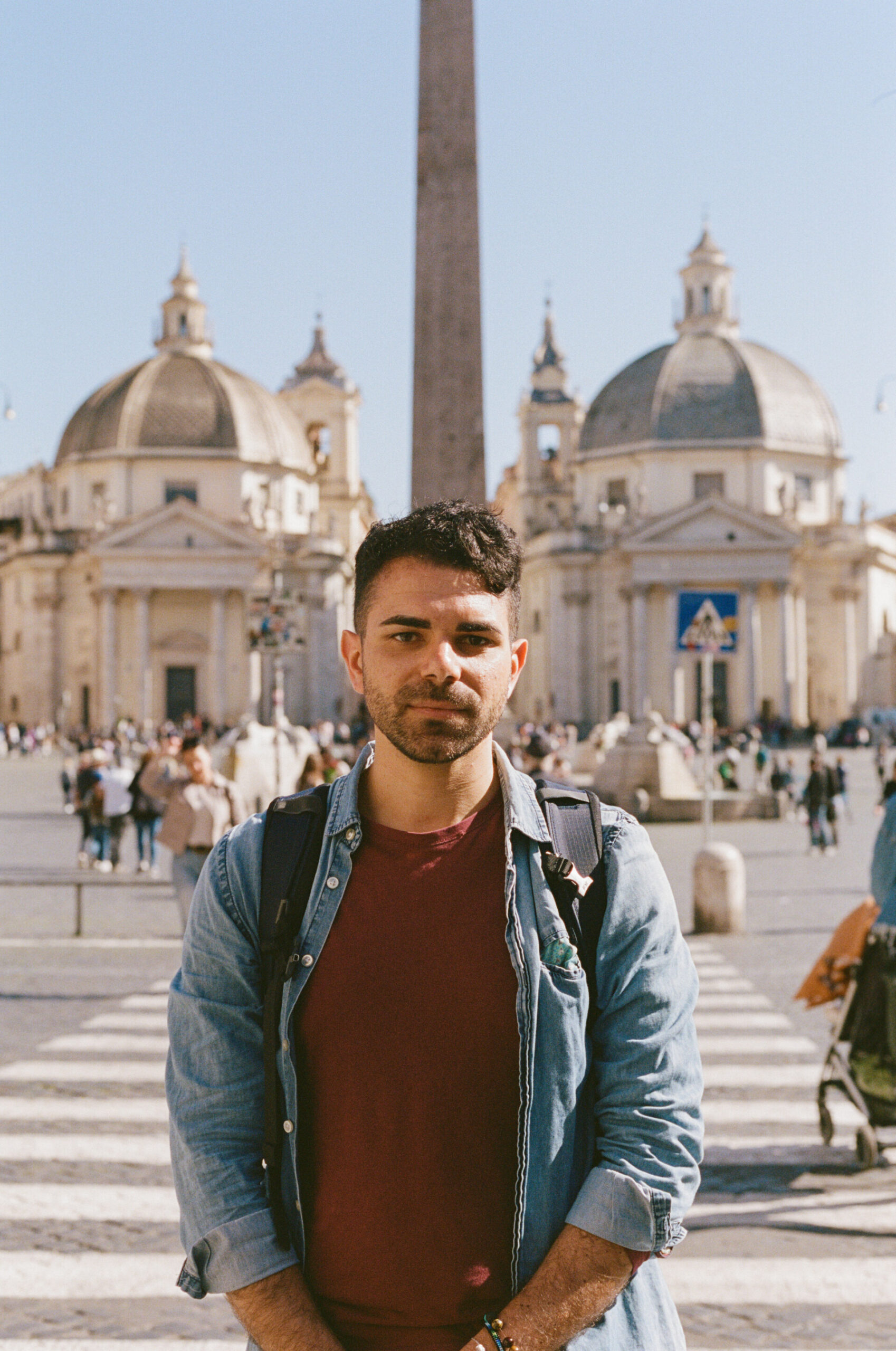
Amir Mohammed in Rome
“It’s because Italian people kind of look down on North Africans and lack appreciation for Arab culture. So whenever I tell them my mix, it’s almost like they snub me or hold their noses. As a child I wondered if I would’ve been treated differently if I were half Belgian or Swedish. It’s hard to be half non-European in Italy.”
“Our identity is like an invisible weight tied around our necks,” says Dr. Francesca Conway, an OBGYN based in Rome. Another proud Roman, living along the backdrop of the Parco degli Aquedotti in Roma Sud, Dr. Conway inherited her Roman pride from her Roman mother–just as she inherited her pale complexion from her American father.
“For me it can be weird answering ‘da dove sei?’ (‘where are you from?’)” continues Francesca. “It can be easier to identify as an American with Anglophone people but as an Italian in Italy. It’s variable. But when I tell people I’m Italian, there’s always a pause. I don’t look Italian,” she points to her blonde hair and Irish-American features.
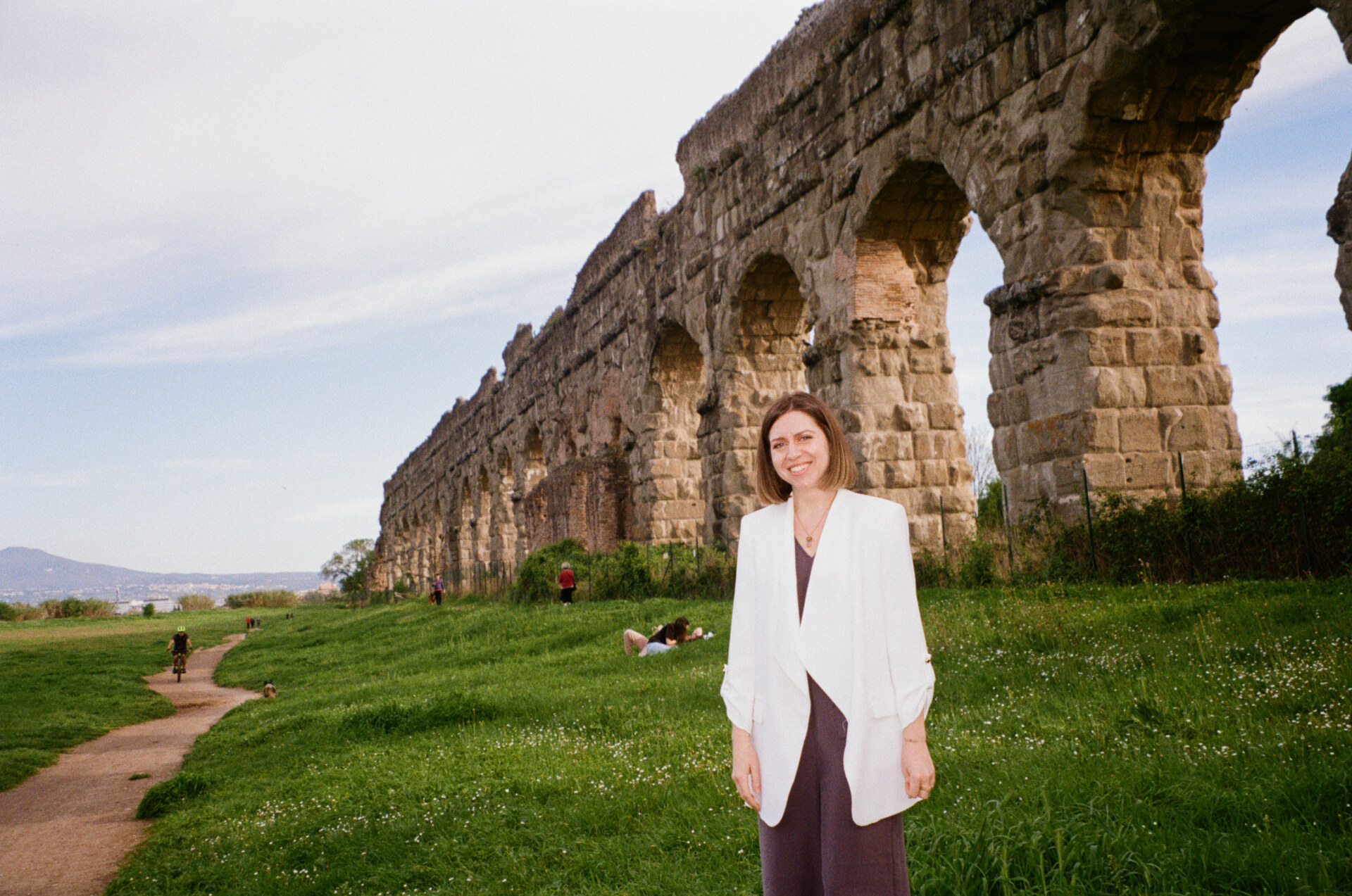
Francesca Conway in Rome
The look of the Italian. How strange that, in a country with such diversity, we can be fixed on what an Italian “should” look like. Blonde hair and Germanic names are common in Bolzano. Dark, nearly Arab complexion is a norm in parts of Sicily and Calabria, where Ancient Greek and Arab history blend like pistachio in ricotta cream. And while you can see the faces of what were the Etruscans and Ancient Romans in the faces of many everyday Italians, our history has been mixed within our DNA that to exclude one image over another is not just ridiculous, but impossible.
Early this year, Italian singer Ghali sang his rendition of Toto Cutugno’s famous “L’Italiano” (“The Italian”) at Sanremo. The song is almost the unofficial anthem for anyone with Italian heritage, whether a Milanese D.O.C. or an Italian-American from Bensonhurst. Recently, at my brother’s wedding in Colombia (his wife is from Medellin), after hours of Latino music, the DJ finally played the song–and my Italian family lept out of their chairs and ran to the dance floor. That’s the reaction of many Italians to this song; it’s a call to memory, to identity.
“Lasciatemi cantare
Perché ne sono fiero
Sono un italiano
Un italiano vero”
“Let me sing
Because I’m proud of it
I’m an Italian
A real Italian”
It was with all this same emotion and passion that Ghali–born and bred in Milan to Tunisian parents–sang it on the famous stage of Ariston in Sanremo. To pay homage to his North African origins, he wove in Arabic lyrics from the song “Bayna” (“Between us”) in order to demonstrate, once more, not just his diversity, but Italy’s own.
For many like me, it was a powerful gesture to re-confirm what it means to be Italian. A real Italian, in today’s Italy.
But the reaction was depressing. Il Giornale labeled it a provocation. Others stormed social media with hateful comments such as “He may be Italian by citizenship but he doesn’t represent Italian identity. He is not Italian,” or worse “Go back and sing in your own country.”
While mixed Italians like me carry the weight of dual identity, being Italian of foreign origin like Ghali renders further complexities.
“I’ve learned to respond to this,” says Desiree Ezane, a former optometrist and rising Christian Faith influencer. Desiree was born in the Ivory Coast but grew up in Pavia after moving there as a very small child. Upon meeting her, you can’t help but notice how perfectly her West African chic combines with Italian elegance. She carries her head high throughout our conversation. If anyone was to attack her with comments similar to those hurled at Ghali, it’s clear she’s prepared to attack back with grace.
“I just give them a short response; I’m Italian and originally from the Ivory Coast. How I’m Italian or why I’m Italian is not something I need to explain. I’m Italian. Period. Now if you want more, we can go into details but I don’t need to go further,” she explains, swinging back her braids.
I ask where her confidence comes from. For myself, and for many mixed Italians, “explaining” ourselves often comes with insecurity. Years of work have made me feel certain of who I am, and yet I sometimes find myself, to this day, quite sheepish when I feel I have to account for what others perceive to be my “exotic features” (many mistake me for North African).
Desiree doesn’t need to think twice before responding: “I just say I’m Italian without any fear. When I say I’m Italian with conviction, they don’t dare question. Sometimes in their mind they think maybe I was adopted or whatever, but it’s not a big deal. Confidence is very important.”
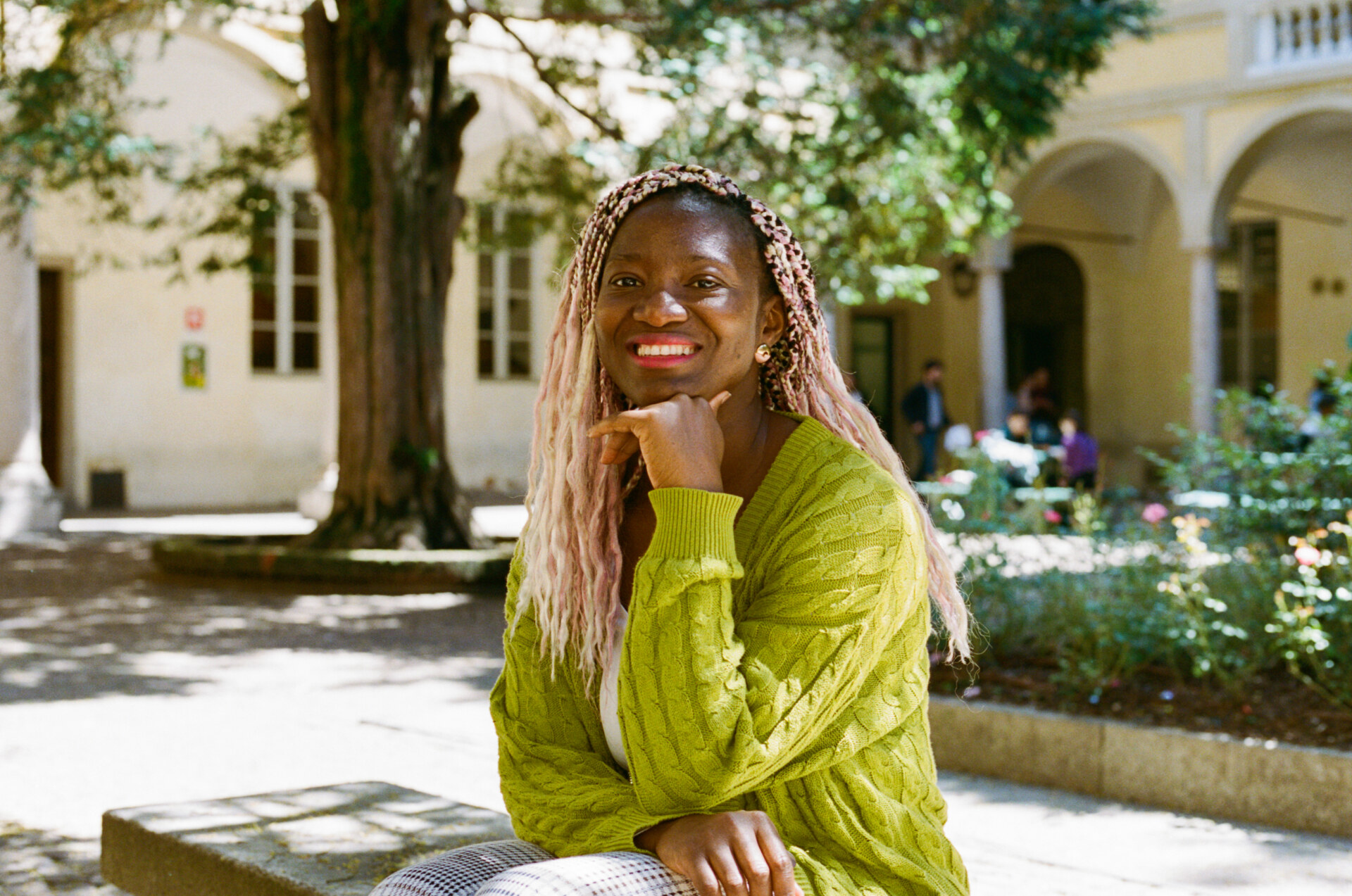
Desiree Ezane in Pavia
What’s in a Name?
I grew up Italian in every way. It’s the smell of the Moka in the morning that immediately transports me to comfort and home. I’m a good Genovese boy, and I dunk my focaccia in my latte machiatto as my mother taught me. And, in thanks to my family’s Southern heritage, I grew up with the saints, onomastici, and fish feasts for Christmas eve. Even despite my “unconventional” appearance, I felt unequivocally and confidently Italian.
But that would come to a screeching halt when it came to my name. My birth certificate reads Jesus Antonio Baez; I’m named after my Dominican uncle who longed for a boy to be named after him. It’s a name that, when pronounced correctly, evokes Spanish castanets, yellow saffron paella, and a touch of Hispanic Caribbean blue. And while I love my uncle and love my name, it has proved to be my biggest bane in Italy.
“Si quieres podemos hablar en español?” (“If you want we can speak in Spanish?”) is the first response of many, as though I couldn’t possibly be an Italian native speaker with that name.
“Come mai parli cosi bene l’Italiano?” would be another, “How is it that you speak Italian so well?”–even after I tell them I’m half Italian. They then proceed to say things such as “Da noi, si mangia cosi” or “Noi italiani siamo cosi” (“In Italy we eat like this” or “We Italians are like such”). It’s as though my name proves to be an impossible barrier between being both accepted and understood as an Italian.
Once, when I returned from a work trip and landed at Milano Malpensa, a customs officer (doing random inspections) took my passport and despite it clearly being Italian, looked at my name and pointed to it. “Come mai sei italiano?” (“How could it be that you’re Italian?”)
How can one respond to that?
“I try to avoid my last name as much as possible,” Francesca tells me. “My first name saves me, but my last name always generates mixed reactions, especially after I say I’m Italian. They ask where Conway is from–maybe British or something Anglo Saxon, and, once I say the States, it somehow negates my Italian identity. I try really hard to stick to my first name as Italians do stigmatize you more when you have a foreign last name. You’ll end up having to give an explanation. In Italy, if you’re mixed with a foreign name, you have to apologize.”
Even Desiree, for all her confidence, confided that she’d felt the same: “I’d find myself excusing myself for who I was. As in, ‘Yeah, I’m Italian BUT’–trying to apologize for being so different.”
Their answers remind me of Italian singer Mahmood’s rise to fame after winning Sanremo in 2019 with “Soldi”. Mahmood–born Alessandro Mahmoud in Milan to an Egyptian father and Sardinian mother–became a sensation thanks to a song that played on both his dual identity and relationship with his father. Unsurprisingly, his win and his last name caused scandal, with the audience hurling incendiary comments once more. Only this time, those tweeting the insults included the then Italian Minister of Interior, Matteo Salvini of the far-right Lega Party.
Comments such as “Since when did illegals represent Italy?” to “Had we only closed the borders we wouldn’t have ended up with him” and then of course, “So it’s the Islamic Festival of Sanremo?” One of the most poignant ones to come to mind: “It doesn’t matter if his mother is Italian–if the seed is foreign, the fruit is foreign. He’s not Italian.”
No matter how much growth one has achieved and inner work one does, sentences like these always hurt. I felt tears stinging my eyes once more when I pulled up this article and read those words. Hearing your own people say such things is like hearing your own mother tell you she doesn’t love you.
Endless interviews followed these–quite frankly–racist statements. “I’m 100% Italian. What I sing is just a memory of my childhood,” he would retort.
“My name was a source of embarrassment and a tremendous weight for me growing up and in my early adult years,” recalls Amir. “Especially in the professional field. I would be rejected for jobs, or my application completely skipped because they saw my name. After university, when I started applying for jobs, I noticed I wasn’t getting call backs as much as others were. So a friend of mine and I chose to do a little experiment. I created two CVs–one with my real name and one with a generic Italian name, like Mario Rossi. This was in 2019. I applied to almost 100 jobs using the two CVs. And what happened was the CV with my real name got two call backs while ‘Mario Rossi’ ended up with 27. It broke my heart because it made me realize that no matter how you identify, this racism plays a role in the daily life for those of us who are mixed or Italians of foreign origin. It really hurt me.”
Pain in the professional sphere is something I can relate to as well: once, a colleague refused to call me Italian, but instead, “the Italian speaker.” Whenever I corrected him that I was Italian, he would smile arrogantly and shake his head, as though waving away an insignificant fly. It left a crack in my soul.
Unsavory Encounters
Karem Rohana is as Tuscan as they come. His accent–with the regional signature of pronouncing c’s like h’s–gives him away fast.
“When I was small, I used to tell people that I’m half Italian, half Palestinian,” he tells me from his flat in Florence. Karem’s mother is from Siena while his father hails from the port city of Haifa. “As I grew older, I feel now 100% Italian and 100% Palestinian; I’m not half of anything. I feel fully both.”
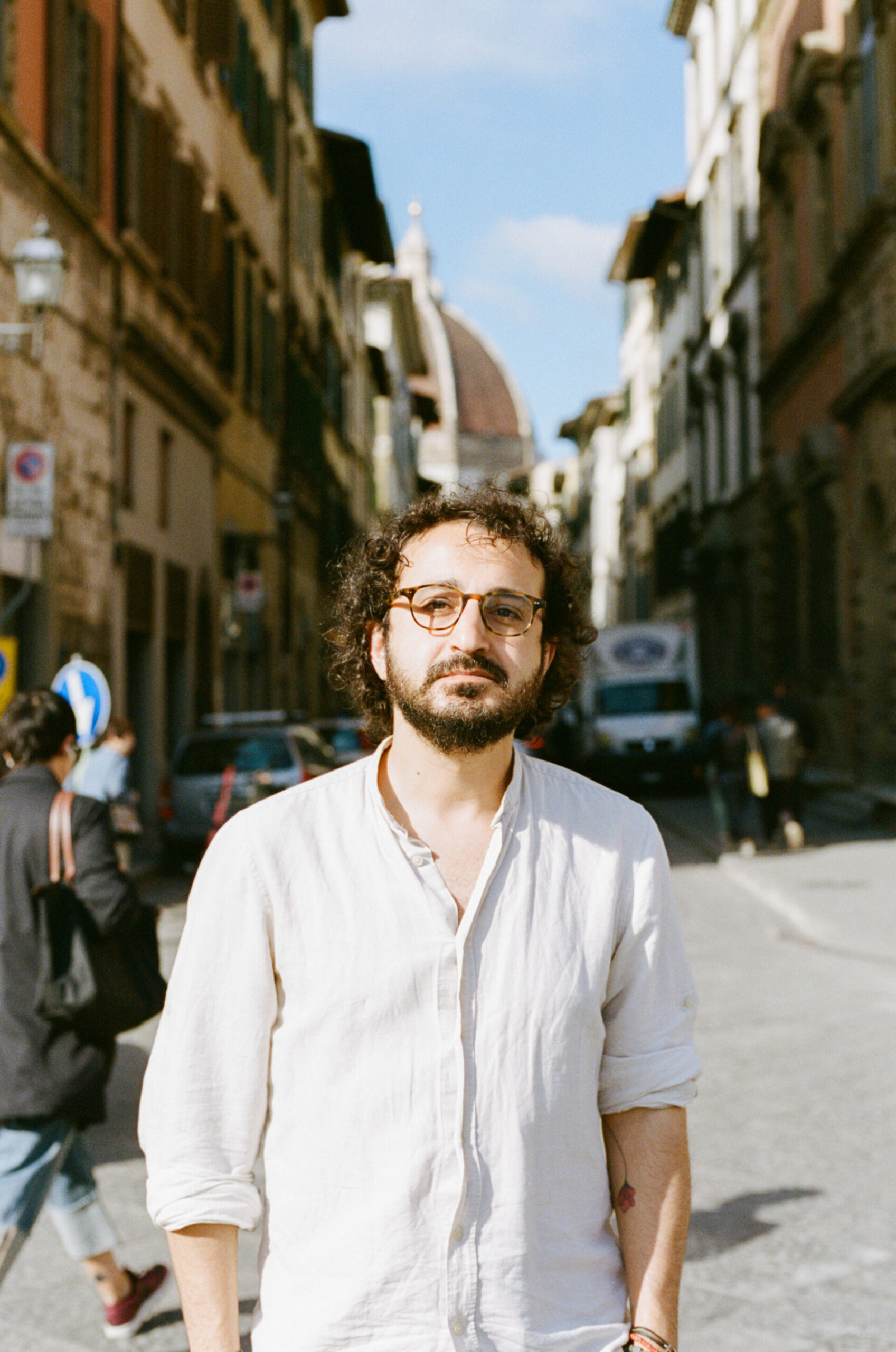
Karem Rohana in Florence
I carry both an Italian passport and a Dominican passport; I vote in both countries, and I identify with both countries. While I grew up predominantly Italian, I feel Dominican too. But as our conversation continues, I’m reminded that not everyone agrees with us.
I’m often stopped by the police in Italy, suspicious that I’m a recent migrant without papers or a permit. As annoying as it can be, it doesn’t bother me much. I flash my carta d’identita (ID Card) and they scan through it, nothing to be revealed–apart from the ignorance of the police officers themselves.
“How are you Italian?” they will ask. Hispanic name. Foreign birthplace (I was born in New York City). But once they realize my mother is Italian from Genova, the bewilderment strikes. “But you’re so exotic!” are the most innocent exclamations–as though I’m some fruit or carpet you can find at a vintage market.
“There’s no way you’re really Italian,” comes the more sinister ones.
“I always have to explain my background and that my mother is from Siena whenever I’m stopped,” says Karem. “I think on a professional level I feel very integrated in the Italian system. I get respect because I’m a health worker and work in the hospital. That’s what stops the police from probing me further. In fact, I’ve heard them say ‘oh, he’s one of the good ones’ to me. As in, I’m one of the ‘good Arabs’. The good foreigners. For sure, if I was named Mario Rossi, whether I pickpocketed or worked in the hospital, I would have respect. I’m saved and accepted only by my profession.”
Karem then adds a cheeky laugh, “They’re still taken aback by my accent!”
“I’ve been shunned by fellow Italians in an international context,” Francesca tells me. As she works in global women’s health, she frequently finds herself across Africa and Asia working with doctors from around the world, including fellow Italians. “I think that somehow it stems from their own insecurities, thinking that I’m taking the spotlight from them because of my dual or multilingual background. It’s made me feel like I have to prove I’m Italian.”
“What about with your family?” I ask her. “Have you ever felt you needed to prove yourself with them?”
She casts her gaze down. “That’s where it hurts the most,” she explains. “Once, when I was young at the beach, I recall family members remarking how I can’t tan. I just burn and go red! I could never go bronze like everyone else in Italy. At one point, I heard a relative say ‘how can it be that this girl can’t tan?’ It made me feel ugly. It’s a painful memory because when it comes to family, you can’t smooth talk it or even retaliate like you could with strangers, because they know your mixed heritage. I felt as exposed as my burnt skin.”
100% Italian
What I find so unique about being mixed Italian is that despite all the pain, the racism, the rejection, the drama, and the weight of our identity in our day-to-day lives, we can still love Italy to its fullest.
When a police officer stops me or I have a xenophobic encounter, I always go to my favorite restaurant–Il Caldraio, nestled in the viccoli (or carruggi, as we say in Genova) of the Centro Storico. I sit there, calm my nerves and take in the ambience and the marble mortar used to make countless pestos. I think of my mother and how she was born and bred here. I think of my grandmother, who was raised here. I think of my family and ancestors and all my generations before me who come from this land. And with that thought and a bit of fabulous farinata with sausage and crescenza cheese, I’m reminded that no matter what they say or how they make me feel, this is where I belong.
Despite the pain, I love Italy! I love being Italian! And, above all, I love being Genovese. I love having Neapolitan origin. I love how I am blunt like the Genovese but gregarious and animated like my Neapolitan family. I love the smell of focaccia in the morning and the scent of the sea from my balcony. I love the Neapolitan cornicello I wear on my neck, made of coral from Torre del Greco where my family hails from. I love the creuza de ma (paths to the sea) that poetically lead you to the Mediterranean, and I love how the flavor of pandolce genovese dunked into coffee first thing in the morning takes me home no matter where I go.
Despite all the pain and all the obstacles that being mixed Italian presents me, nothing could take away the beauty and the sensation that I feel in being Genovese. In being of Neapolitan origin. In being fully Italian in my own way.
“Everything about me is Roman,” says Amir. “My love for art and history is natural growing up in the midst of it all here. You just fall in love with it because you’re blessed enough to grow up in an open museum.”
He continues, “Paradoxically, I feel very Italian for being mixed. Being mixed is a very Italian thing. Before I would say I’m Italian BUT my father is Egyptian; now I just say ‘I’m Italian and Egyptian.’ No excuses. No apologies. I am who I am. I’m mixed.”
Indeed, when looking at the history of Italy, you see that it’s been a country heavily influenced by many cultures. The Romans themselves were just one of many Italic tribes–among the Etruscans of Tuscany, the Sabines of Umbria, the Samnites of the Campanian mountains–who conquered the continent and the rest is history (pun intended). Southern Italy was part of Greece for a millenia, with the glorious title of Magna Grecia, as the Romans referred to it. Following the fall of the Roman Empire, Germanic tribes and Norman vikings also left their mark. Lombardy gets its name from the German tribe that came and never wanted to leave. Sicily was an Islam Caliphate for a while, and, for centuries after the fall of Rome, Italy was divided between the French, Spanish, Austrians, and Byzantines. And each and every one of them left their mark, not only on the food and architecture, but on the population.
Indeed, we’re all mixed.
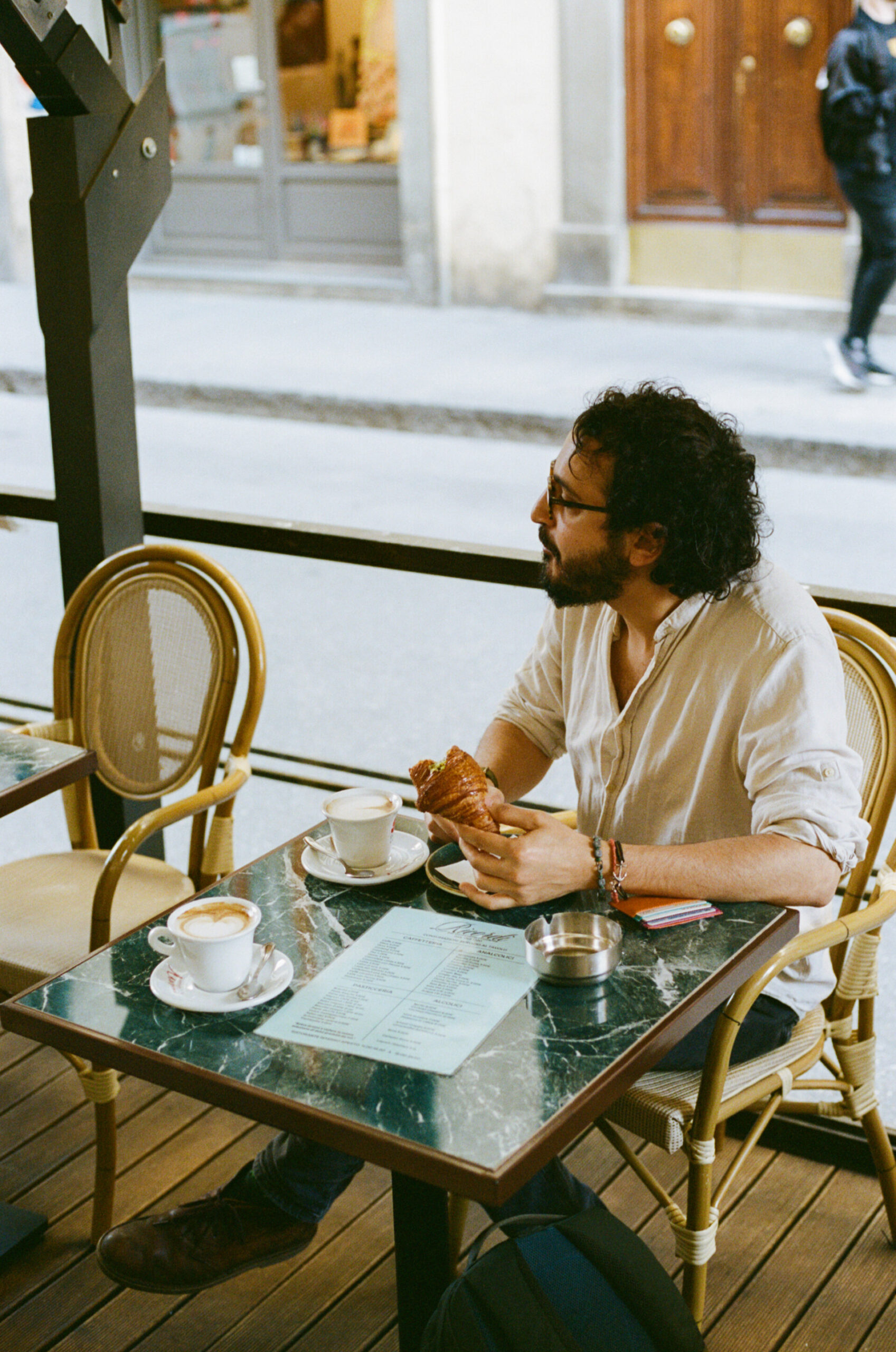
Karem at Ricordi
“I love how people know from my accent that I’m Tuscan,” says Karem. “But if you were to look at me, you’d see so many things that make me Italian. My love for cappuccini which I must have in the morning no matter where I am–even in Palestine! The memory of my grandmother’s zabaione. My Tuscan humor, which is politically incorrect and provocative. You can even find it at my favorite place in Florence to get a traditional panino: Semel. The staff are blunt; they poke fun at you, which to an outsider can be very overwhelming, but it’s the spirit of being Tuscan! And, in a way, the spirit of being Italian. And I am Italian! I’m 100% Italian.”
For Francesca, an Italian-American girl from Roma Sud, “I’m instinctively Roman when I’m abroad. And when I come back from a long trip, the first thing I do is visit the Parco degli Aquedotti and I know instantly I’m home. But the place that opens my heart are the Roman hills.”
Francesca goes on to describe how, not far from Rome, nestled in the hills on Lake Gandolfo, is the restaurant Pagnanelli, which has the dreamiest views of the water. “You’re close to Rome but you’re in silence!”
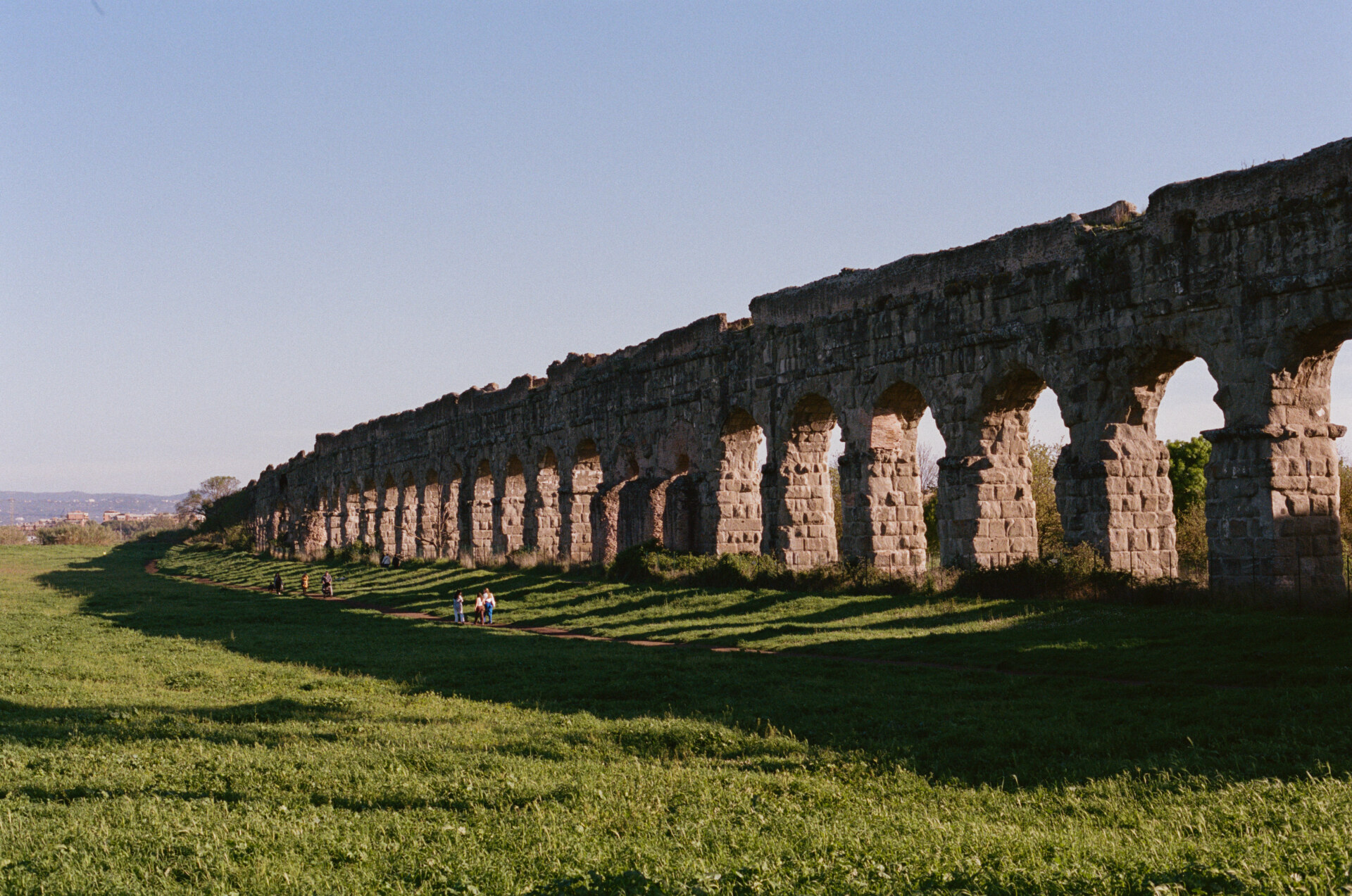
The Parco degli Aquedotti, one of Francesca's happy places
I laugh. “Silence is such a Genovese trait. It’s not very Roman,” I quip. But Francesca, in a grace as soft and lovely as Pagnanelli’s views, is quick to correct me. “Oh I’m very Roman! Especially in my mannerisms, which I notice more when I’m abroad. Take the fact that we Romans are quick with the insults. I’m like ‘ma che sei scemo?!’ at every moment. Romans have had to be tolerant and face adversity for thousands of years and it’s in our behavior. So when life throws something at me, I just say ‘sti cazzi!’ [‘who gives a fuck’]. It complements the high-strung American in me.”
“Sti cazzi!” Maybe this is the attitude that those of us who are mixed or of foreign origin in Italy have developed all these years. That despite everything–the racism, the rejection, the triggers, and the endless questions…. sti cazzi!
Because despite the ugly episodes which unify the experience of mixed Italians, the beauty of where we are from overtakes us all.
“I wouldn’t choose to grow up in any other country,” said Desiree. “Or be from any other city apart from Pavia. It’s a country that, from the moment I was born, was planned for me, so I am called to be Italian. Every time I cross the border from abroad and come back to Italy, I feel safe. I feel at home–especially when I go to my favorite restaurant, Il Reggisole, where the food is so typically pavese.”
“So you love Italy, too?” I ask. Desiree beams a smile. Reggisole comes from the word “reggere il sole” or “to hold up rays”, and this might be the best way to describe her radiance. “Being Italian is a culture that I have simply embraced as mine and never questioned,” she responds. “I took it completely without separating the good and the bad. I love Italy and Pavia exactly as they are.”
